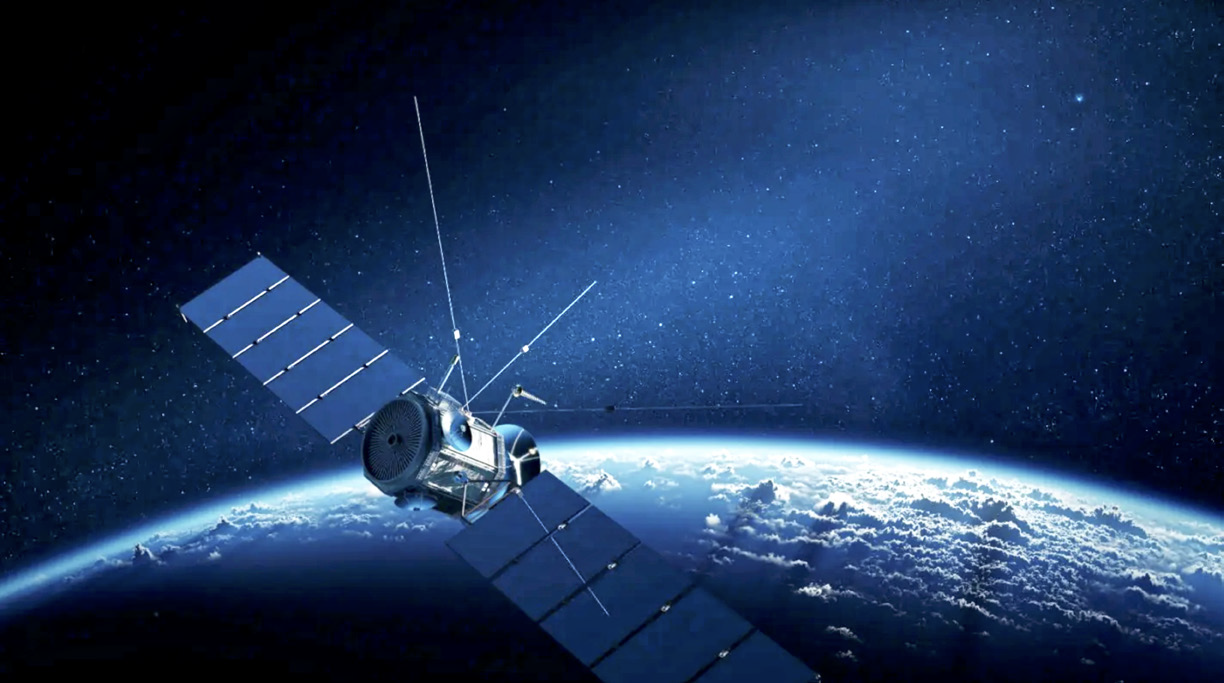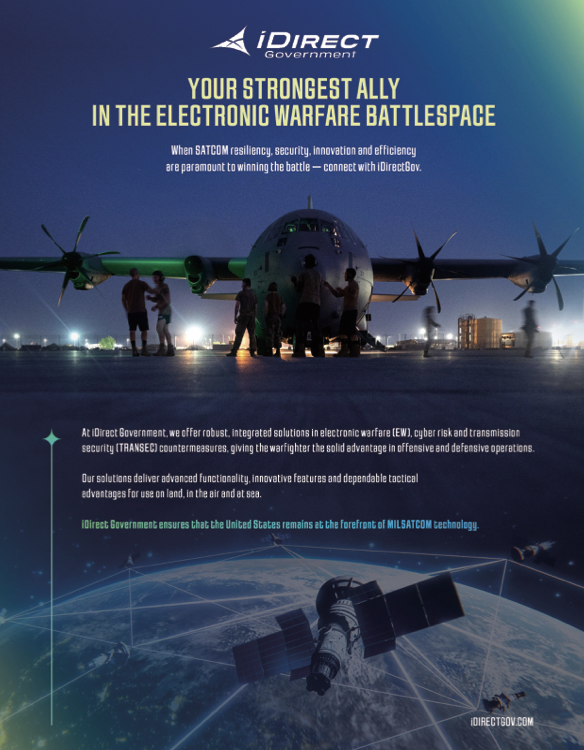Tudor Williams, Chief Technology Officer, Filtronic
In a world where communication needs to be instant, and 100% reliable, regardless of location, RF has a critical role to play—and Q/V-band is a key player, one that could more than double the bandwidth of current satellite systems, bringing us closer to faster, more reliable communication — whether it’s for Earth-based or non-terrestrial networks.

Despite its potential, the reality of Q-/V-band adoption comes with technical challenges, said Tudor Williams, Chief Technology Officer at RF- and mm-Wave specialist, Filtronic.
While Ka-band has been key in satellite communications, Q & V band—covering frequencies from 47 to 52 GHz—is now a promising option for next-generation networks.
Q-/V-band offers a much wider spectrum, which means it can deliver faster data speeds, for more users with more efficient communication between satellites and ground stations.
This makes it particularly attractive for industries like satellite communications and Earth observation, where the need for faster, more reliable data transfer is always on the rise.
However, switching to Q&V band isn’t a simple task. There are some technical hurdles to jump over first, and one of them is that today’s satellite systems use Traveling Wave Tube Amplifiers (TWTAs), which have been the go-to for decades.
TWTAs can provide high power amplification, but are expensive and complex to manufacture and have a limited lifetime.
__________________________
Solid-state technology
__________________________

That’s where semiconductor technology comes in. Solid State Power Amplifiers (SSPAs) offer an alternative to TWTAs, particularly those built with Gallium Nitride (GaN), which can offer similar performance to TWTAs but are smaller, simpler to manufacture, more cost- effective and have a longer lifetime often > 15 years.
In turn, these could lower costs, speed up production and make satellite systems much more scalable.
Why does this matter? In industries such as MILSATCOM and SATCOM, size, weight and power (SWaP) and particularly for ‘new space,’ cost are crucial. Satellites, especially those used in military or deep-space missions, have strict space and weight limits.
Here, solid-state amplifiers offer a more compact and powerful solution, which is exactly what’s needed for high-frequency systems like Q- & V-band.
Plus, as semiconductor nodes continue to shrink—going from 0.15 microns to even smaller gates length <100nm—these devices are only going to perform better.
____________________
Communications
____________________
The disruptors might be targeting ultra-high frequencies like E-band, where Filtronic has been at the leading edge for more than 10 years. However, for many satellite operators, Q- & V-band is the next step.
Relatively, it is easier to develop and doesn’t have the same level of atmospheric attenuation issues that come with higher frequencies.
Additionally, it uses the combination of both Q- & V-bands, which maximizes bandwidth and ensures performance.
A great example of Q-/V-band technology in action is the European Space Agency’s ARTES initiative, which is driving forward the development of advanced satellite communications.
Filtronic has secured a contract with ESA to develop cutting-edge RF solutions for next-generation satellite networks, at Q-/V-band, as well as K- & Ka-band.
The project focuses on developing high power, high linearity feeder links for satellite payloads.
To make this work, different frequency bands are used for specific tasks—Q-band is used for the downlink from the satellite to the ground stations, as this high-power feeder link enables high data throughput to meet the needs of expanding New Space constellations.
For receiving data on the satellite, V-band comes into play, allowing access to large bandwidth for significantly higher data rates. This setup makes data transmission much more efficient and plays a key role in boosting broadband access. It’s especially important for mega constellations, which are essential for meeting the growing global need for fast and reliable data.
_________________
Secure Comms
_________________
Beyond boosting commercial satellite services, Q- & V-bands hold great potential for secure communications, particularly for defence. The narrower beam width at higher frequencies is less susceptible to interception or jamming, which is crucial for military-grade communication systems.
As frequencies increase, the signal becomes more focused. Lower frequencies spread out, making them easier to intercept. But at millimeter-wave frequencies like Q- & V-band, the signal is more targeted and less vulnerable to interference.
This makes Q-/V-band ideal for secure communications, particularly in sensitive, high-risk environments like battlefield operations. They are also harder to jam with interferers as the power required would be beyond conventional systems.
While tactical communications at millimeter-wave frequencies aren’t widespread yet, their potential for better security and more efficient data transmission is driving growing interest within defence sectors.
Higher frequencies are also improving missile technology, particularly in millimeter-wave seekers. The increased resolution of radar and detection systems at these frequencies allows for enhanced spatial awareness, crucial for pinpointing targets with greater accuracy. With the same protection from jamming in contested environments.
__________________________
The thermal challenge
__________________________
As promising as Q-/V-band is, one major challenge it faces is heat management. Higher frequency devices are less efficient so naturally convert more power into heat, which becomes especially problematic in space or other extreme environments where space and weight are at a premium and thermal management difficult.
The good news is that advances in semiconductor technology, particularly in the aforementioned GaN, are helping to address this.
With improvements in GaN, including smaller gate lengths and more efficient designs, it’s possible to increase power output while improving efficiency.
To tackle thermal issues, materials like copper-tungsten or diamond heat-spreaders can be used and potentially combined with innovative cooling techniques, such as liquid cooling.
These solutions are critical to ensuring systems continue to function effectively in the challenging environments of satellites and military operations.
GaN is key in these efforts as its high breakdown voltages and excellent thermal conductivity make it perfect for high-frequency applications.
However, it’s not without challenges. GaN devices tend to generate high heat densities with hot spots around transistors, sometimes reaching over 300°C, which can lead to system failures without effective thermal management.
_______________________________
What’s next for Q & V band?
_______________________________
Q-/V-band holds significant potential to transform satellite communications, offering faster speeds, more secure connections and greater efficiency. While there are challenges to overcome—from system design to thermal management and GaN production—the industry is making great strides toward solving them.
For example, Filtronic is tackling thermal management by employing waveguide combined amplifier structures, providing very high power, while spreading thermal loads across multiple devices instead of concentrating them in one spot.
Along with conventional forced-air cooling methods, there’s also the option to use liquid cooling for high-power configurations, giving more flexibility for future system designs. With innovations in semiconductor technology, solid-state amplifiers, Q-/V-band is becoming a game-changer for the future.
 Projects such as the ARTES initiative and the work happening at companies like Filtronic are pushing technology forward, and we’re just scratching the surface of what’s possible.
Projects such as the ARTES initiative and the work happening at companies like Filtronic are pushing technology forward, and we’re just scratching the surface of what’s possible.
Q-/V-band is bringing all closer to a future where data bandwidth capacity is significantly increasing. Whether it’s for global networks or scientific missions, the future’s is certainly looking bright, and
Q-/V-band is going to be at the heart of critical communications.
filtronic.com

Tudor Williams
Author Tudor Williams is the Chief Technology Officer at Filtronic.
About Filtronic
Filtronic has been at the forefront of RF technologies for 45 years. The company has a world-class reputation for high performance, innovation, quality and high reliability and specializes in mission critical communications for aerospace, defence, space, telecommunications infrastructure and critical communications.


